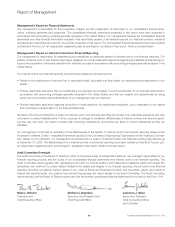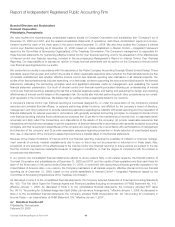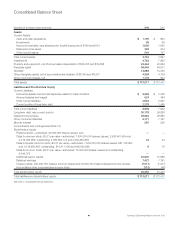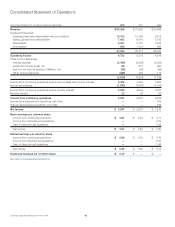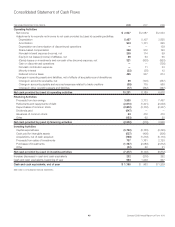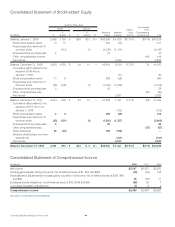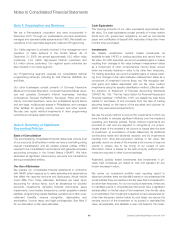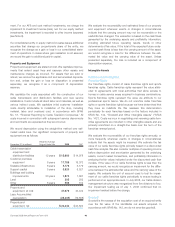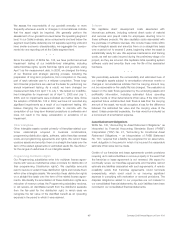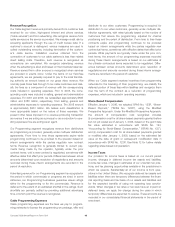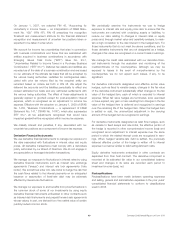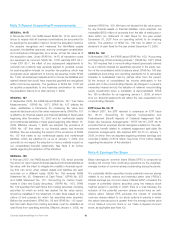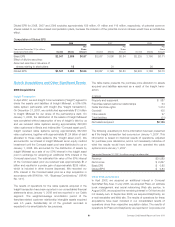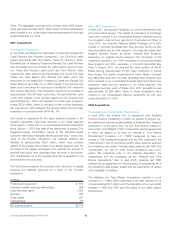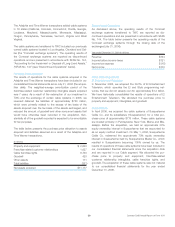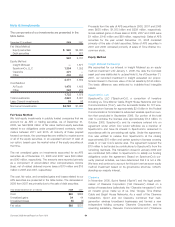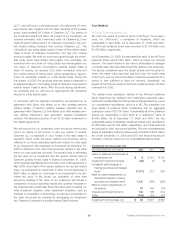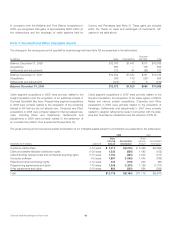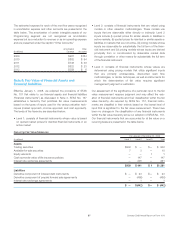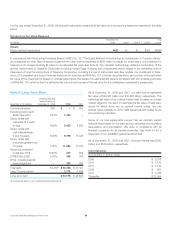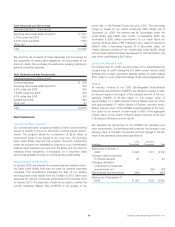Comcast 2008 Annual Report Download - page 51
Download and view the complete annual report
Please find page 51 of the 2008 Comcast annual report below. You can navigate through the pages in the report by either clicking on the pages listed below, or by using the keyword search tool below to find specific information within the annual report.On January 1, 2007, we adopted FIN 48, “Accounting for
Uncertainty in Income Taxes — an Interpretation of FASB State-
ment No. 109,” (“FIN 48”). FIN 48 prescribes the recognition
threshold and measurement attribute for the financial statement
recognition and measurement of uncertain tax positions taken or
expected to be taken in a tax return.
We account for income tax uncertainties that arise in connection
with business combinations and those that are associated with
entities acquired in business combinations in accordance with
Emerging Issues Task Force (“EITF”) Issue No. 93-7,
“Uncertainties Related to Income Taxes in a Purchase Business
Combination,” (“EITF 93-7”). Deferred tax assets and liabilities are
recorded as of the date of a business combination and are based
on our estimate of the ultimate tax basis that will be accepted by
the various taxing authorities. Liabilities for contingencies asso-
ciated with prior tax returns filed by the acquired entity are
recorded based on criteria set forth in FIN 48. We adjust the
deferred tax accounts and the liabilities periodically to reflect any
revised estimated tax basis and any estimated settlements with
the various taxing authorities. The effect of these adjustments is
generally applied to goodwill except for post-acquisition interest
expense, which is recognized as an adjustment to income tax
expense. Effective with the adoption on January 1, 2009 of SFAS
No. 141R, “Business Combinations — a replacement of FASB
Statement No. 141,” (“SFAS No. 141R”), which also supersedes
EITF 93-7, all tax adjustments recognized that would have
impacted goodwill will be recognized within income tax expense.
We classify interest and penalties, if any, associated with our
uncertain tax positions as a component of income tax expense.
Derivative Financial Instruments
We use derivative financial instruments to manage our exposure to
the risks associated with fluctuations in interest rates and equity
prices. All derivative transactions must comply with a derivatives
policy authorized by our Board of Directors. We do not engage in
any speculative or leveraged derivative transactions.
We manage our exposure to fluctuations in interest rates by using
derivative financial instruments such as interest rate exchange
agreements (“swaps”) and interest rate lock agreements (“rate
locks”). We sometimes enter into rate locks to hedge the risk that
the cash flows related to the interest payments on an anticipated
issuance or assumption of fixed-rate debt may be adversely
affected by interest-rate fluctuations.
We manage our exposure to and benefits from price fluctuations in
the common stock of some of our investments by using equity
derivative financial instruments embedded in other contracts such
as indexed debt instruments and prepaid forward sale agreements
whose values, in part, are derived from the market value of certain
publicly traded common stock.
We periodically examine the instruments we use to hedge
exposure to interest rate and equity price risks to ensure that the
instruments are matched with underlying assets or liabilities, to
reduce our risks relating to changes in interest rates or equity
prices and, through market value and sensitivity analysis, to main-
tain a high correlation to the risk inherent in the hedged item. For
those instruments that do not meet the above conditions, and for
those derivative instruments that are not designated as a hedge,
changes in fair value are recognized on a current basis in earnings.
We manage the credit risks associated with our derivative finan-
cial instruments through the evaluation and monitoring of the
creditworthiness of the counterparties. Although we may be
exposed to losses in the event of nonperformance by the
counterparties, we do not expect such losses, if any, to be
significant.
For derivative instruments designated and effective as fair value
hedges, such as fixed to variable swaps, changes in the fair value
of the derivative instrument substantially offset changes in the fair
value of the hedged item, each of which is recorded to interest
expense. When fair value hedges are terminated, sold, exercised
or have expired, any gain or loss resulting from changes in the fair
value of the hedged item is deferred and recognized in earnings
over the remaining life of the hedged item. When the hedged item
is settled or sold, the unamortized adjustment in the carrying
amount of the hedged item is recognized in earnings.
For derivative instruments designated as cash flow hedges, such
as variable to fixed swaps and rate locks, the effective portion of
the hedge is reported in other comprehensive income (loss) and
recognized as an adjustment to interest expense over the same
period in which the related interest costs are recognized in earn-
ings. When hedged variable-rate debt is settled, the previously
deferred effective portion of the hedge is written off to interest
expense in a manner similar to debt extinguishment costs.
Equity derivative instruments embedded in other contracts are
separated from their host contract. The derivative component is
recorded at its estimated fair value in our consolidated balance
sheet and changes in its value are recorded each period to
investment income (loss), net.
Reclassifications
Reclassifications have been made between operating expenses
and selling, general and administrative expenses in the prior years’
consolidated financial statements to conform to classifications
used in 2008.
49 Comcast 2008 Annual Report on Form 10-K


